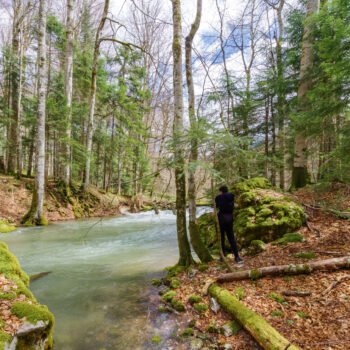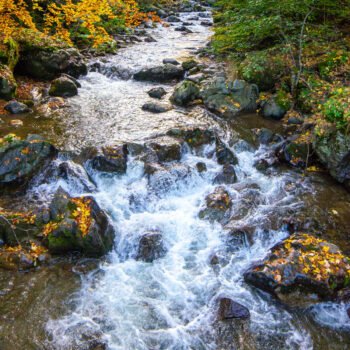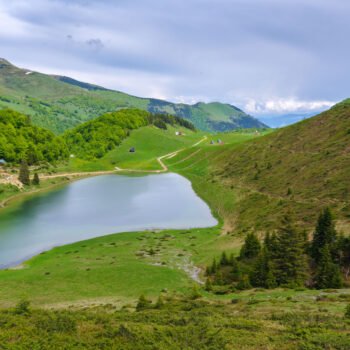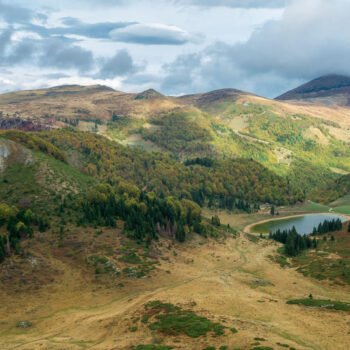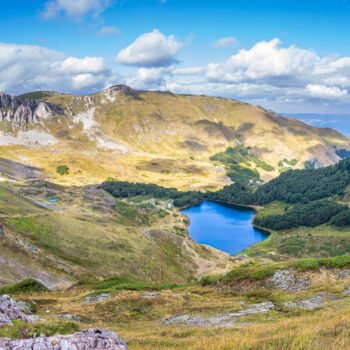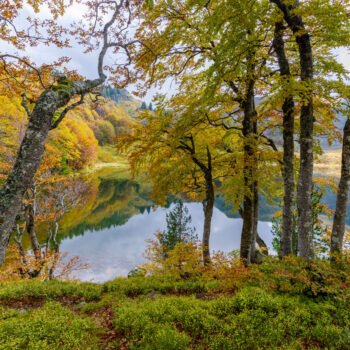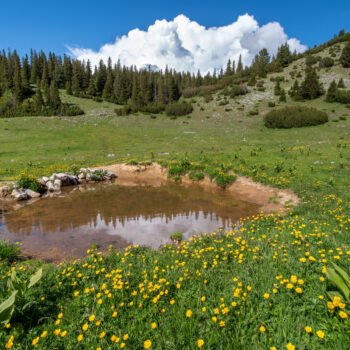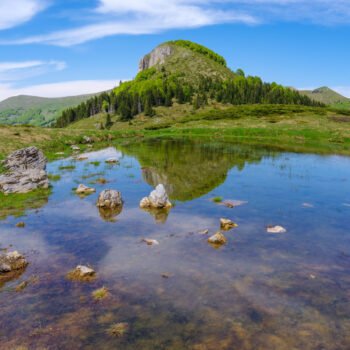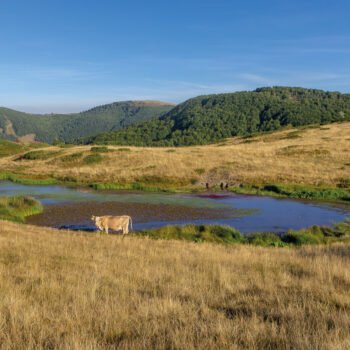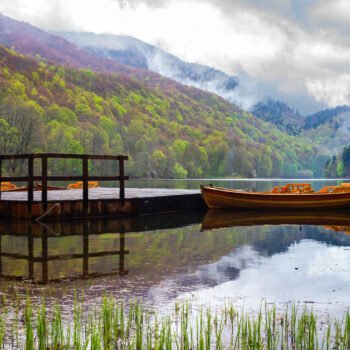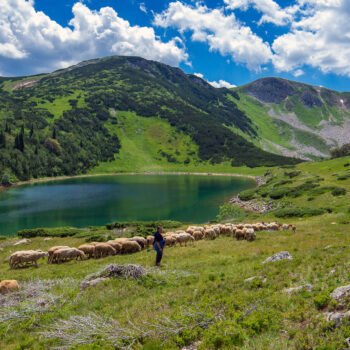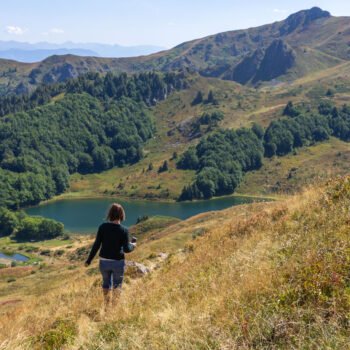- /
- Katun Road Untold Bjelasica
- /
- Spring and Lakes
Spring and Lakes
You will see it for yourself that Bjelasica’s water has got that “something”, something you cannot determine what it is, but you know that it is good for you. Is it some secret ingredient from the snow, or perhaps from the rocks, or it’s some fairy magic – we couldn’t decide.
In a hydrological sense, Bjelasica is one of the most abundant areas in Montenegro. Its rocks are water resistant, so the springs can appear everywhere and they rarely dry out. They are also very cold, because they are mostly fed by snowdrifts. Kofilj, located below Zekova Glava is the coldest Bjelasica spring.
Glacial lakes, like some scattered pieces of mirror, where you can see puffy clouds just gliding by, some peak and trees shadows too, are a special treasure of Bjelasica. Without them, its scenery wouldn’t be so breath-taking, exciting and mystical.
All the lakes are glacial, and regardless of their beauty, they are, unfortunately, doomed to gradual extinction.
In addition to these, there are a lot of ponds there and several remnants of lakes, including the one which is pretty large located in Jezerine, where the ski centre is situated. A legend says that there used to be a large lake there, it shattered one day and flew away. It was then that the river Svinjača changed its course, moving from the south side of Kolašin to its north side.
Biogradsko lake is the largest and “the most romantic” one. It is situated at the altitude of 1,094 meters, in the central part of Biogradska Gora, at a place where a glacier melted once upon a time. The deepest point of Biogradsko lake is 12 meters, the average depth is 4.5 meters. The shores of the lake are 3.5 kilometres long. It is fed by the Biogradska river and the water from the lake drains through the river Jezerštica.
Many people believe that Biogradsko lake is the Balkan’s most beautiful lake. Its emerald colour, the reflection of mountains and the rainforest, cultivated area surrounding it and the perfect air are the things that make this lake magical. During the winter, the lake is covered by thick ice, and deer and does can be seen walking on it. But autumn is the period when an unbelievable magic can be seen on the water surface with the fallen leaves in all the possible colours and fiery reflections floating around, calmed only by the occasional mysterious fog.
Being the main recreational location of the area, Biogradsko lake is the place where you can take a walk along the trails, swim, row, and go sport fishing.
Pešića lake is the second largest lake on Bjelasica. It has been named after Pešić family, residents of the Lim basin from Gornja villages, owners of summer katuns surrounding the village. It is situated at the altitude of 1,821 meters, in one of the Bjelasica largest cirques, in the area between its highest peaks: Crna Glava (2,139 m.a.s.l.), Zekova Glava (2,116 m.a.s.l) and Belilo (2,059 m.a.s.l.), in the source part of Pesica stream. The lake is 290 meters long and its maximum width is 165 meters. The length of the shore is 800 meters during the summer months, while in spring, due to the higher water level, its length is 1,200 meters. The average depth of the lake is around 3 meters and the maximum one is 8 meters. The lake has a tributary and an estuary. Livestock breeders use it as a water trough for their animals, but it is also suitable for recreation and fishing.
Šiško lakes are situated in the central part of Bjelasica, at the foothills of the peaks where two large glaciers met.
Large Šiško lake is located in the area known as Šiška, where there is also a mountain of the same name, and so the lake was named after it. This lake is of glacial origin too, it collects the water from the melting snow, its tributaries and from precipitation, and it loses water by evaporation and its estuaries when the water level is high. It is situated at the altitude of 1,660 meters, it is around 400 meters long, 140 meters wide and its depth can reach up to 3.2 meters, when the water level is high. It is surrounded by some charming katuns and a forest.
Small Šiško lake is around one kilometre away from the Large one. It is situated at the altitude of 1,780 meters. Its length is 105 m, and the width is some 65 meters. It collects the water in the same way as the Large, but its water is much more turbid, full of mud and lush vegetation and this is the reason why this lake turns into a swamp, when the water level is low. Its depth is around 1.7 meters and it mainly serves as a water trough for cattle. There is a legend saying these lakes were named thus because, in the old days, sheep from the nearby katuns were sheared (šišane) here.
Ursulovačko lakes are situated in the region called Ursulovac, and they were named after it. It was assumed that the name originates from the times of Saxons and that it was connected to the Bjelasica brown bears, since urs or ursus is bear in Latin. The 14th century Saint Sava Chrysostom mentions the Vlach (cattle breeding) katun called Ursulovac.
Large Ursulovačko lake has nestled in beautiful surroundings, where mountain beech and bog pine meet. It is close to the village of Kurikuće, so it is called by some a Kurikuće’s lake. Compared to all the other lakes of Bjelasica, this one is situated at the highest altitude, so it is much colder and clearer. It is located on 1,895 m.a.s.l., it is 162 meters long and 106 meters wide. Its average depth is 3 meters. Two springs can be found nearby and the lake gets its water from them. It loses the water only by evaporation, it doesn’t have estuaries.
Small Ursulovačko lake is also known as Blatina. It is about a kilometre away from the large one and is situated at the altitude of 1,760 meters. It is 175 m long and 90 meters wide. Its depth is 3 meters. It never dries out, even though it is in danger of extinction. It serves as a water trough for cattle.


